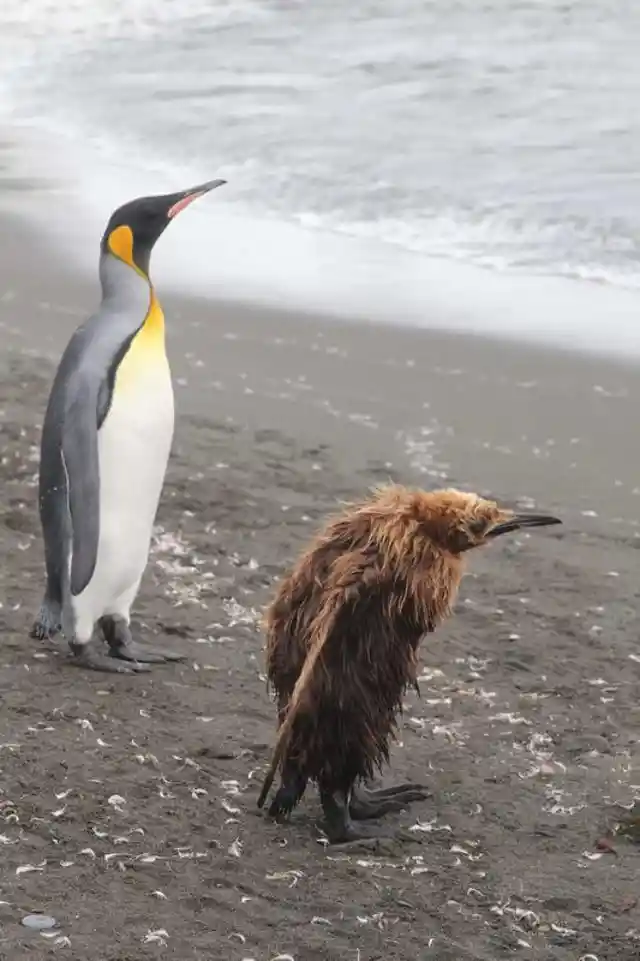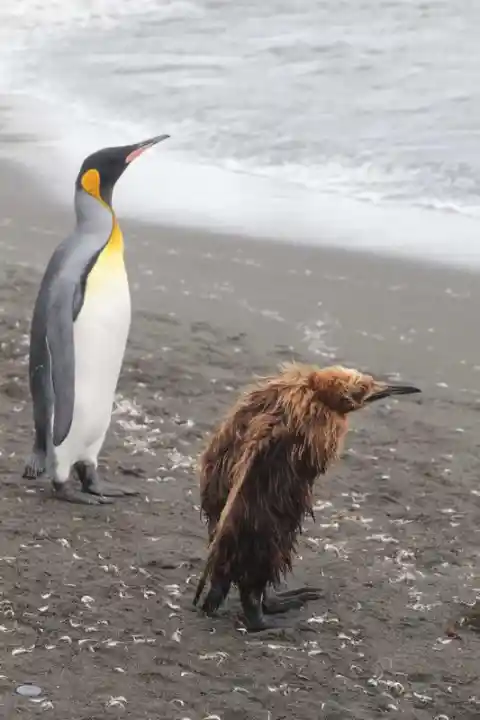Jamie Hayes was on a trip around the sub-Antarctic islands. Here, surrounded by an abundance of natural beauty, a teenage penguin in an awkward stage of molting stood out like a sore thumb.


“The chicks don’t swim until after they molt, [and] this guy clearly got wetter than he’d planned to. He just gave this very amusing, anthropomorphic vibe of a dude who had had a really bad day going home to maybe change clothes.”
“One colony we went to had something like 100,000 king penguins,” Hayes said. “The chicks were in various stages of molting their ‘woolly’ feathers. Some still had all of their baby fluff, like this guy, and some had pretty comical patches that look like chest wigs … some even had weird mohawks.”


Unfortunately for penguins, the process of shedding their baby fluff can be embarrassingly similar to human puberty. The king penguin is the second-largest penguin in the world and is “characterized by its dignified, upright posture, a long bill, and vivid coloration,” according to Britannica.
Penguin chicks are covered by thick, brown feathers until they start to molt at 10 to 12 months old. Their baby feathers are eventually replaced by sleek, black feathers on their backs, white feathers on their chests and orange feathers on their ears and throats. These waterproof adult feathers, and the blubber underneath, helps to keep them warm in the freezing ocean waters.